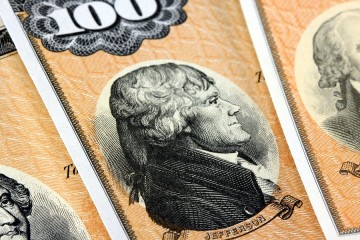Everything’s a Buy as Central Banks Keep on Greasing Markets

published Jun 8th 2016, 6:00 pm, by Ye Xie, Natasha Doff and Dani Burger
(Bloomberg) —
Misery is making strange bedfellows in global markets.
At a time when risky assets including stocks, commodities, junk bonds and emerging-market currencies are rallying to multi-month highs, so are the havens, from gold, government bonds to the Swiss franc and the Japanese yen.
No matter that the U.S. labor market is deteriorating and the World Bank has just cut its estimates for global economic growth. Investors either don’t believe the news is bad enough to kill a global recovery that’s already long in the tooth, or they’re betting that sluggishness in some of the biggest economies means central banks will stay more accommodative for longer.
“Everything is being driven by high liquidity that ultimately is being provided by central banks,” Simon Quijano-Evans, chief emerging-market strategist at Commerzbank AG, Germany’s second-largest lender, said in London. “It’s an unusual situation that’s a spill over from the 2008-09 crisis. Fund managers just have cash to put to work.”
For much of the time since the financial meltdown eight years ago, investors have been in the mindset that bad economic data is good news for markets. The near-zero interest-rate policies by major central banks — and negative borrowing costs in Japan and some European nations — have pushed traders to grab anything that offers yield. And every indication that the liquidity punch bowl will stay in place is greeted by markets with a cheer.
Euphoric Market
The latest euphoria started Friday when the U.S. job report showed America added just 38,000 jobs in May, the worst reading since 2010. That has eliminated any chance that Federal Reserve policy makers will raise interest rate from as high as 0.5 percent, when they convene next week, according to data compiled by Bloomberg based on Fed fund futures. The odds for a move in July have declined to 20 percent, from 53 percent a week earlier.
China, which contributes the most to global economic growth along with the U.S., has played its part to buoy the sentiment. The economy has stabilized following a new dose of credit expansion from earlier this year. In the euro-zone, the European Central Bank entered new territory in its effort to stimulate the flagging economy, buying the debt of some of the continent’s biggest companies for the first time.
Relieved Traders
By Wednesday this week, the Standard & Poor’s 500 Index reached a 10-month high, commodity prices jumped to the strongest since October and non-investment-grade bonds extended this year’s advance to more than 9 percent. The pared expectations for Fed rate hikes have also pushed the dollar lower, helping boost assets sensitive to the greenback, such as gold, oil, the yen and franc.
Investors can be forgiven for feeling a sense of relief. Signs are everywhere that the U.S. economic recovery, which started seven years ago, is maturing. Earnings growth has plateaued. Business spending has sagged and global trade remains stagnant. On Tuesday, the World Bank cut its outlook for global growth this year to 2.4 percent, down from the 2.9 percent estimated in January.
In the U.K., a narrowing of polls over the past week has raised the likelihood of a British exit from the European Union. Against all this, preemptive Fed rate increases would be a body blow.
“There was a lot of nervousness in the markets with respect to the Fed,” said Manish Singh, who oversees about $2 billion as Crossbridge Capital’s head of investments in London. “The Fed and U.S. dollar are definitely the big factors — the fact that the Fed is not raising comes as a relief.”
Exotic Corners
One consequence of the concerted gains is that investors will find it more difficult to protect themselves in a market selloff, according to Goldman Sachs Group Inc. Higher correlations between regional markets make it difficult to hide out in foreign stocks.
Bond yields hover near record lows, squashed by central banks’ quantitative easing plans, and defensive equities have been bid up, Goldman’s Christian Mueller-Glissman wrote in a note to clients Wednesday.
That and dovish central bank policy have chased investors into exotic corners of the market looking to hedge, said Michael Purves, chief global strategist at Weeden & Co LP in Greenwich, Connecticut.
“There’s a lot of rationale getting long the VIX right now,” Purves said. “It’s one way of hedging, and that argument applies anytime we get some sort of follow-through rally and volatility is low.”
Shares outstanding in exchange-traded notes betting on an increase in the VIX are at all-time highs. The counts, which rise along with demand for ETFs, has nearly quadrupled over the past three months for the VelocityShares Daily 2x VIX Short Term ETN, a security that appreciates as turbulence increases and often used as an equity hedge. Short interest on the security, while still well above its historic average, has fallen 60 percent since March.
“I am not entirely convinced by this rally,” said Francois Savary, who helps oversee the equivalent of $2.7 billion as chief investment officer at Prime Partners in Geneva. “There is too much correlation between asset classes and that’s dangerous when sentiment remains erratic.”







No Comment